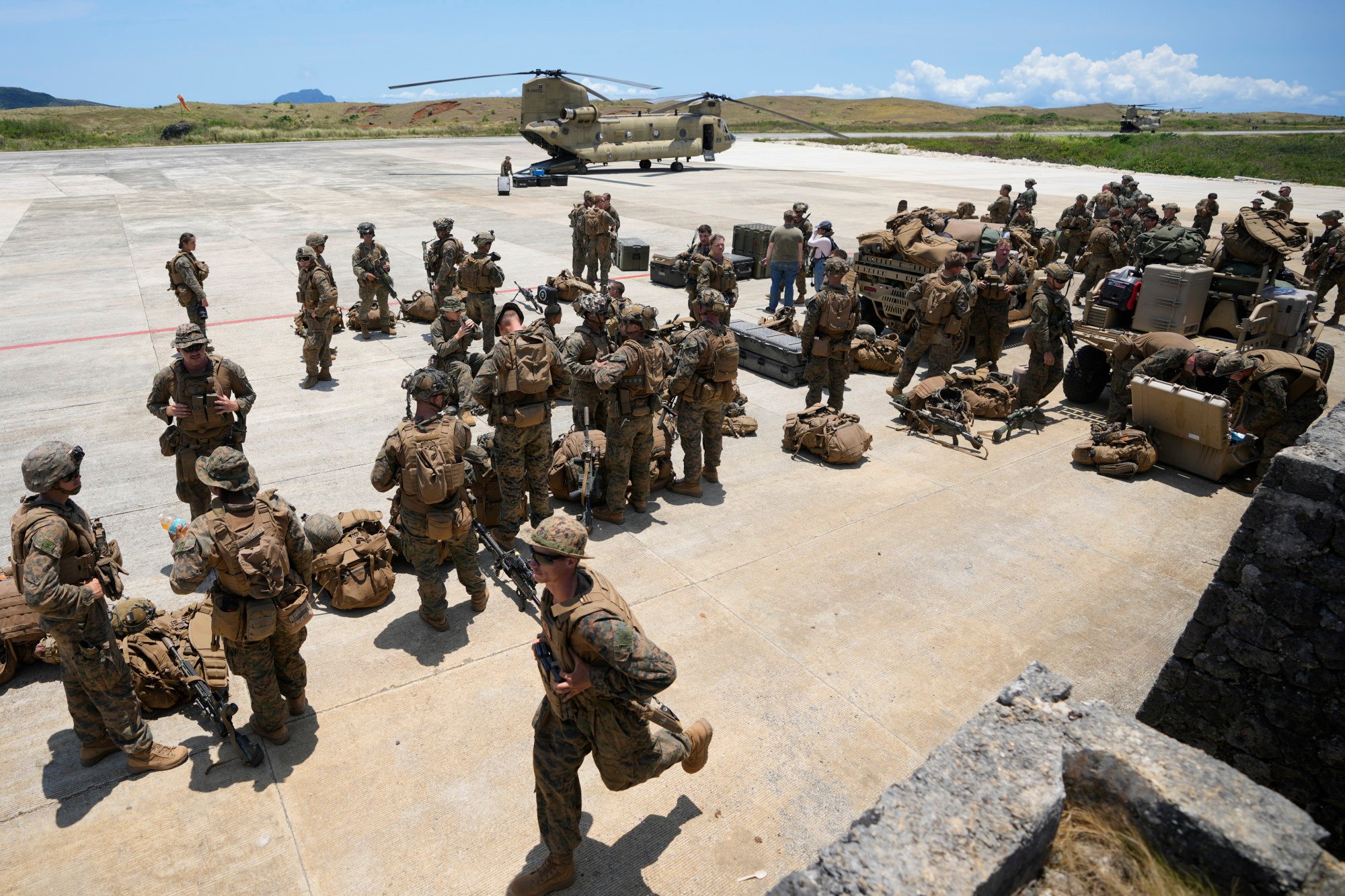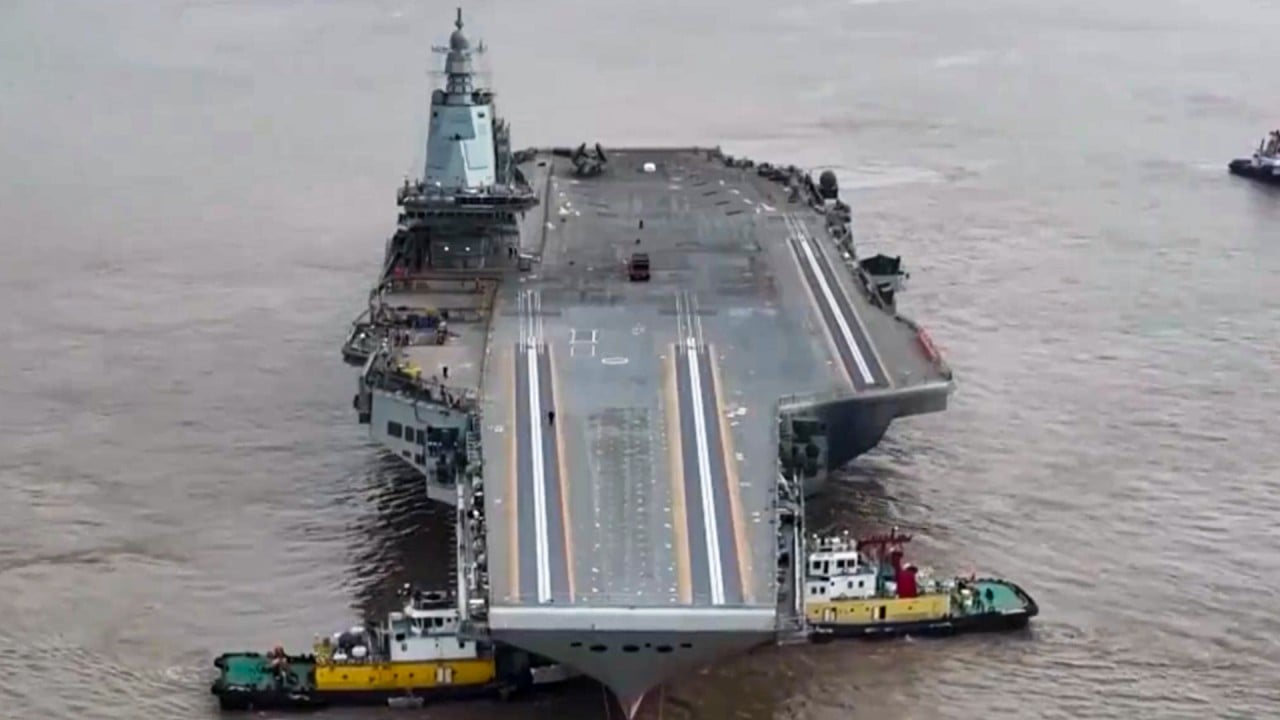Rommel Banlaoi, director of the Philippine Institute for Peace, Violence and Terrorism Research, told This Week in Asia that the Fujian possessed strong air and sea capabilities.
Asked if the sailing of the Fujian was timed to coincide with ongoing military drills between the US and the Philippines, Banlaio said the Chinese military typically calibrated its responses based on external events.
“The situation in the waterways is becoming more worrisome now because all parties are increasing their military activities. And that is not good for regional peace and stability. What we need now is to de-escalate the current tensions in the South China Sea and conduct more diplomacy.”
In February last year, the Philippines added four bases that US troops could access under the Enhanced Defence Cooperation Agreement (EDCA), increasing the total to nine.
“Philippine coastguard vessels are not military but civilian vessels. Any coastguard activities in the South China Sea, if ever under attack, will not be covered by the MDT,” Banlaio said, referring to Article 5 of the Mutual Defence Treaty signed between the US and the Philippines, under which both countries recognised that “an armed attack in the Pacific area” on either party would prompt countermeasures to meet their “common dangers”.
Defence analyst Jose Antonio Custodio told This Week in Asia that China was expected to use its new aircraft carrier to launch sortie aircraft in the West Philippine Sea, Manila’s name for the waters of the South China Sea within its exclusive economic zone.
‘Japanese anvil for an American hammer’
Despite the presence of the Fujian in regional waters, the carrier would not pose much of a threat to Japan and its American ally due to the overwhelming dominance of their combined fleet, Custodio said.
“The Japanese carrier forces operate in conjunction with the even more powerful Nimitz and Ford classes of the US Navy, making it suicidal for China to attempt to challenge them,” he said.

“They effectively bottle up the Chinese in that area and will serve to be the Japanese anvil for an American hammer that will neutralise any Chinese navy’s operations aimed to destabilise the region.”
Japan’s naval capabilities alone can be an effective counterweight to China’s naval power, according to security analyst Chester Cabalza, who said the Fujian was a new and untested asset.
The combined naval experience and technological prowess of Japan and its allies put them in good stead ahead of the Chinese carrier’s future missions, said Cabalza, founding president of International Development and Security Cooperation.
The Fujian was expected to serve dual purposes in the region, Cabalza said. The carrier had a symbolic role through its “tall presence” during joint drills involving the US and its allies and was likely part of the standby force to be activated by the Chinese Navy’s Eastern command theatre overseeing the Taiwan Strait and the South China Sea, Cabalza added.
Don McLain Gill, a geopolitical analyst and lecturer at the Department of International Studies of De La Salle University, said China had accelerated its military modernisation and power projection in the western Pacific region since 2008 and the launch of the Fujian was a testament to its ambition.

“Its third aircraft carrier signals its desire to strengthen its regional exclusionary policy in the maritime domain at the expense of regional states,” Gill told This Week in Asia.
In addition, China has been upgrading its submarine fleet with capabilities including the ability to track US submarines. This forms part of Beijing’s focus on integrating its military capabilities under a strategy to control access to and within the Western Pacific, according to Gill.
“Its growing naval capabilities are an increasing challenge for states that seek to secure the stability of the established order. This provides a more potent challenge for countries like the Philippines that seek to defend their sovereignty and rights.”
Banlaio said that while Japan surpassed China in terms of its naval technology, it was pursuing closer alignment with its allies the US and the Philippines to counter the rising threat of the Chinese navy.
“China is catching up rapidly in capability. It aims to tell its neighbours that it is upgrading its capability to fight in the air and at sea.”


